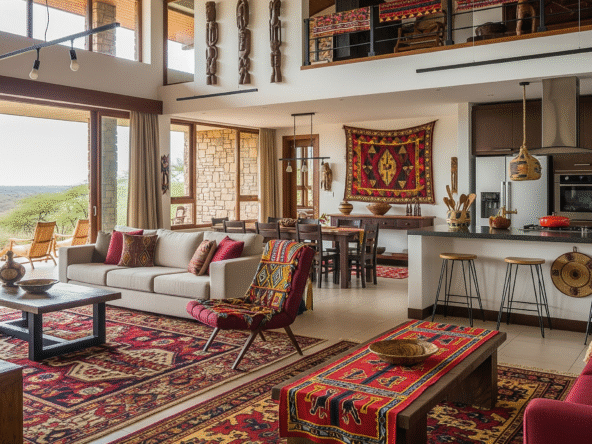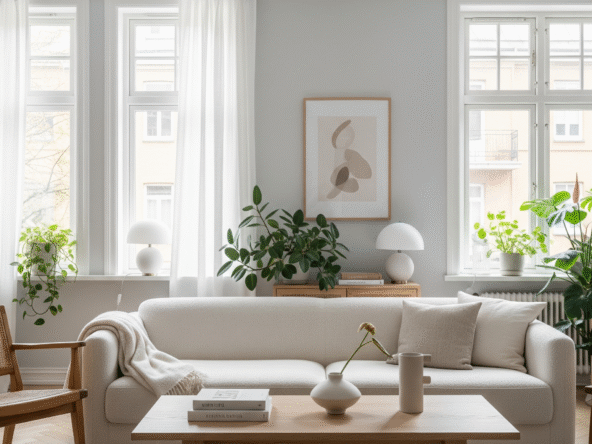As urban sprawl reshapes towns like Kitengela, Ruiru, and Kangundo Road, more homeowners are rediscovering the value of outdoor utility spaces not as rustic relics of the past, but as strategic, modern extensions of the home.
Outdoor kitchens, laundry zones, and verandahs are increasingly being designed with both aesthetic value and functional performance in mind. These additions don’t just improve daily living they also raise property appeal, lower indoor wear, and offer better ventilation.
1. Why Outdoor Utility Spaces Matter
In Kenya’s warm climate, outdoor zones serve multiple roles:
- Cooking meals that produce smoke or oil (e.g., chapati, nyama choma)
- Hanging clothes out to dry more efficiently
- Hosting guests without cluttering indoor space
- Minimizing fire, odor, and grime inside the main house
Such utility spaces are especially appealing in starter homes and rental developments. For related cost-friendly upgrades, explore low-cost fencing ideas.
2. Components of a Functional Outdoor Kitchen
Even a modest outdoor kitchen can boost household efficiency. Key elements include:
| Component | Function |
|---|---|
| Raised platform | Keeps surfaces clean and dry |
| Water point + drain | Easy cleaning and food prep |
| Chimney or vent | Reduces smoke build-up |
| Shelving or cabinets | Storage for utensils and dry food |
Build on a concrete slab with proper slope to avoid puddles. You can plan this using tips from drainage layout principles.
3. Laundry Areas and Clotheslines
Outdoor laundry setups can be simple yet highly effective. Consider:
- Wash basins or stone-built sinks
- A sloped concrete floor with a drainage channel
- Shade cloth or metallic clotheslines
- Rotary drying lines to save space
To manage greywater, link your wash zone to a soak pit to prevent backyard flooding.
4. Verandahs and Multi-Purpose Patios
A verandah isn’t just for relaxation. With the right design, it can serve as:
- A semi-outdoor dining room
- Handwashing or prep area
- Covered space for boots, tools, or bike parking
- Guest waiting area with built-in benches
Some homeowners combine cordwood walls or hollow block screens to enhance privacy see more ideas in cordwood construction.
5. Shelter Options for Outdoor Zones
A functional outdoor area needs proper cover to protect against both sun and rain. Common choices:
| Shelter Type | Pros |
|---|---|
| Corrugated Mabati roof | Durable and affordable |
| Polycarbonate sheets | Let in light, weather-resistant |
| Pergolas with vines | Natural shade and ventilation |
| Cement board overhangs | Good for compact plots with low clearance |
Some homes use top-down construction techniques to blend outdoor zones with multi-storey designs.
6. Durable Material Choices
Outdoor areas need materials that withstand exposure. Recommended options include:
- Concrete floors with a non-slip finish
- Masonry or rammed earth walls for cook areas
- Steel or treated wood for structural frames
- Galvanized piping for all water points
For eco-friendly upgrades, explore green building solutions.
7. Mistakes to Avoid
Avoid these common errors in outdoor space planning:
- Building kitchens too close to perimeter walls
- Ignoring floor slope and drainage
- Using untreated or flammable timber
- Leaving utility areas poorly lit or exposed
Planning early helps you stay compliant and reduces future repair costs.
8. Resale and Rental Value Boost
Outdoor kitchens and utility zones add real value:
- They’re practical and attractive to prospective tenants
- Reduce indoor clutter and maintenance costs
- Increase useable living space, especially on small plots
You’ll see these features standard in master-planned communities, where smart zoning and liveability are prioritized.
Adding outdoor utility spaces is one of the simplest ways to enhance your home’s function and value. With the right layout, roofing, and drainage, these areas can serve multiple purposes without breaking your budget.
Whether it’s for cooking, washing, hosting, or storage the outdoor space is your home’s hardest-working zone.
Explore More:



